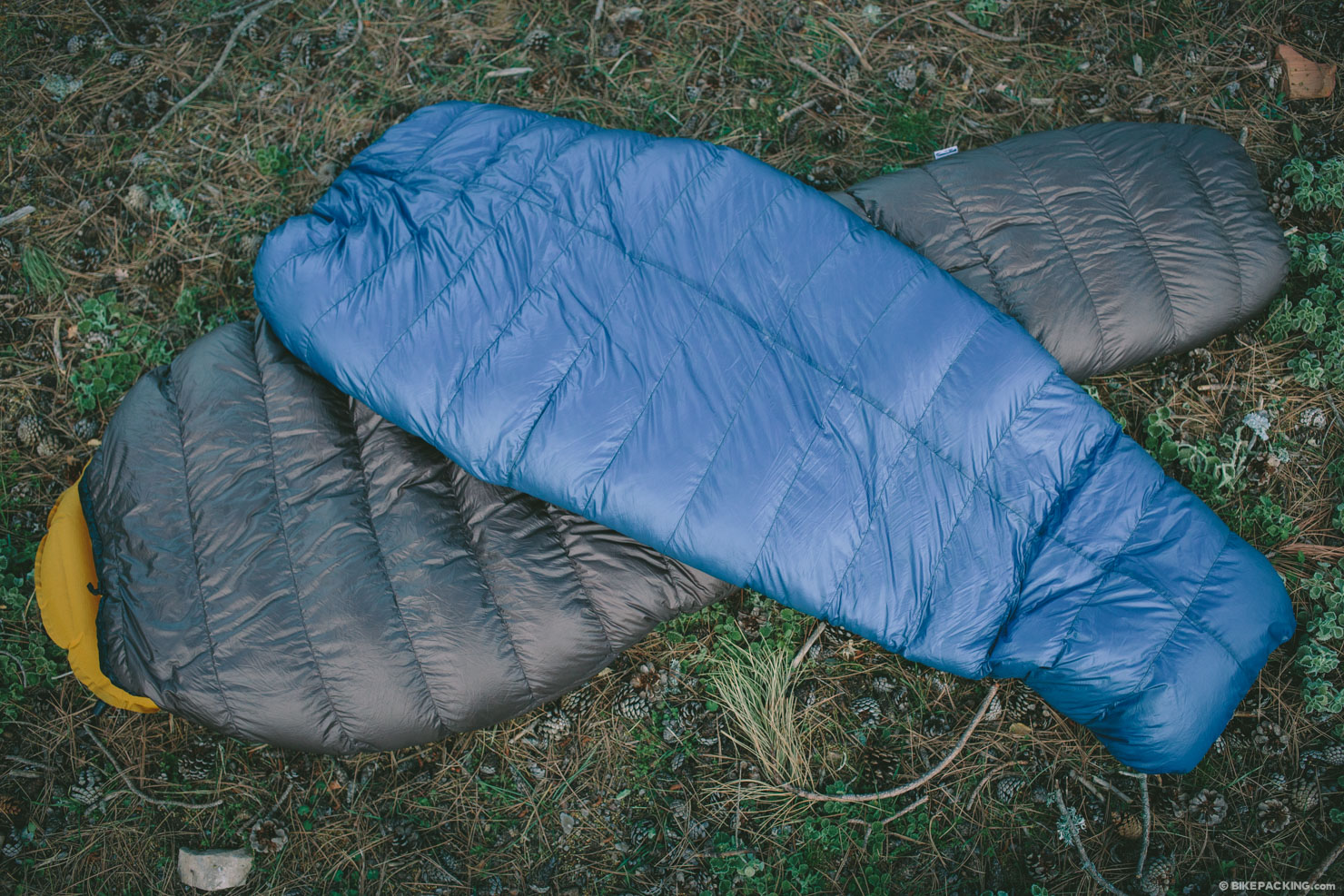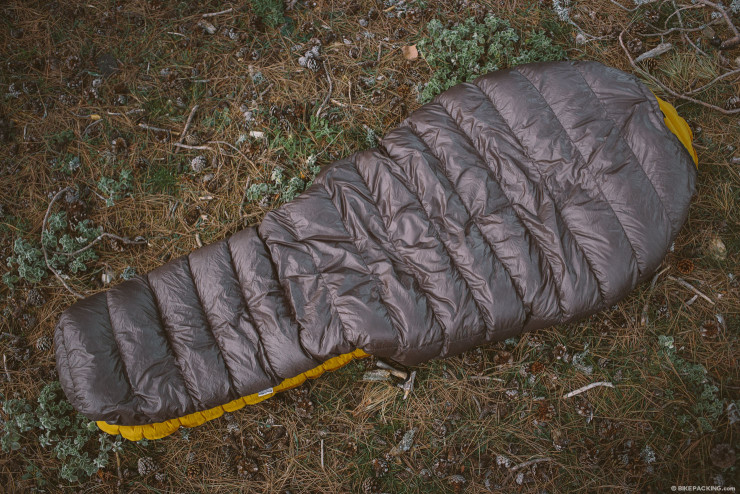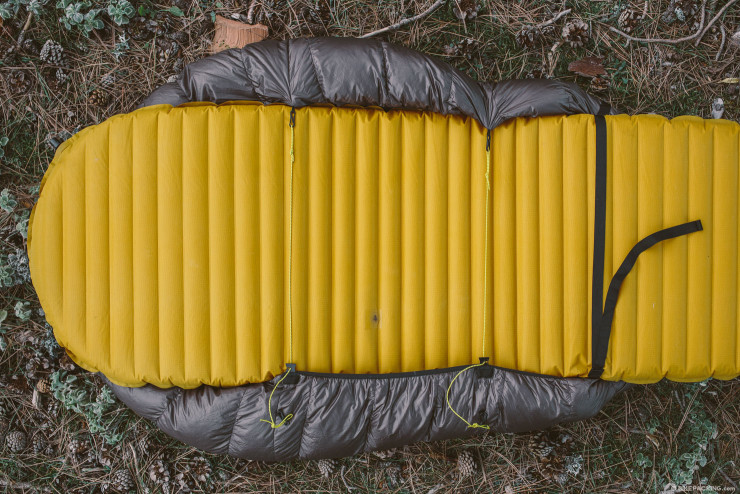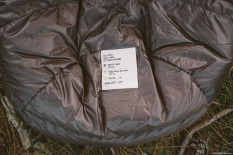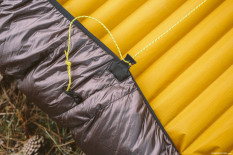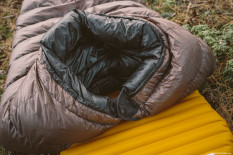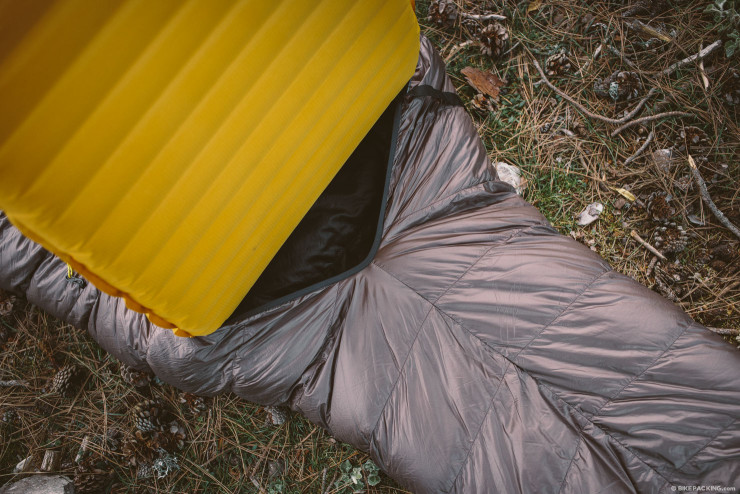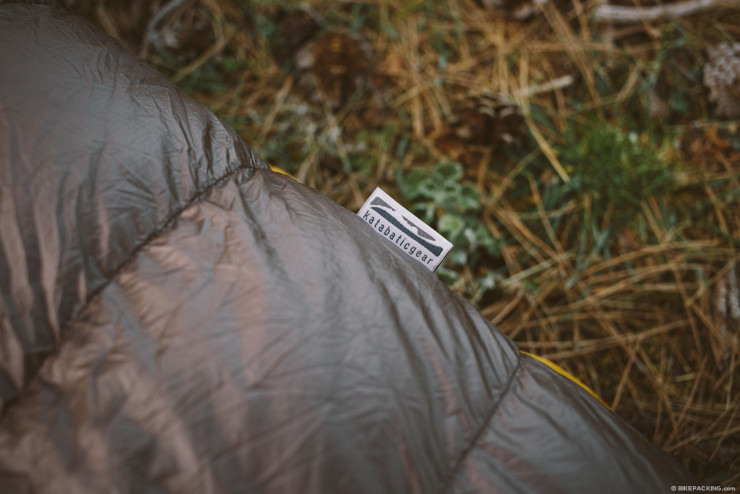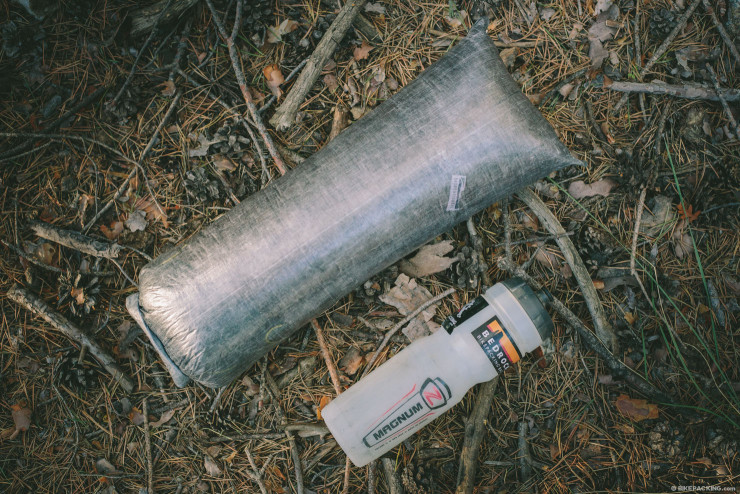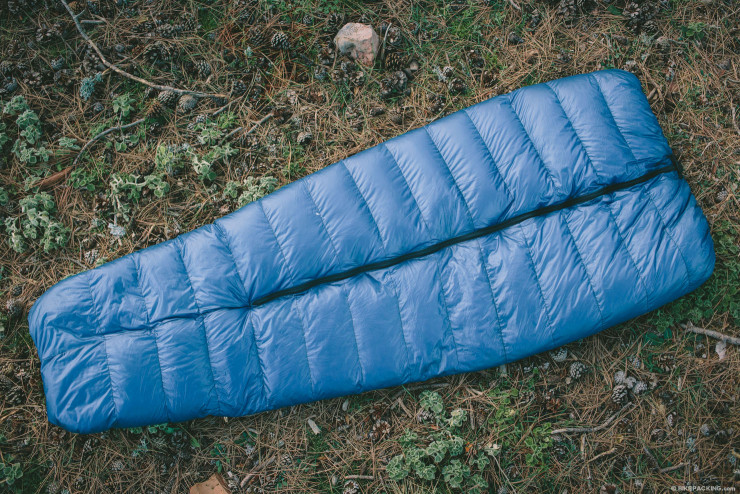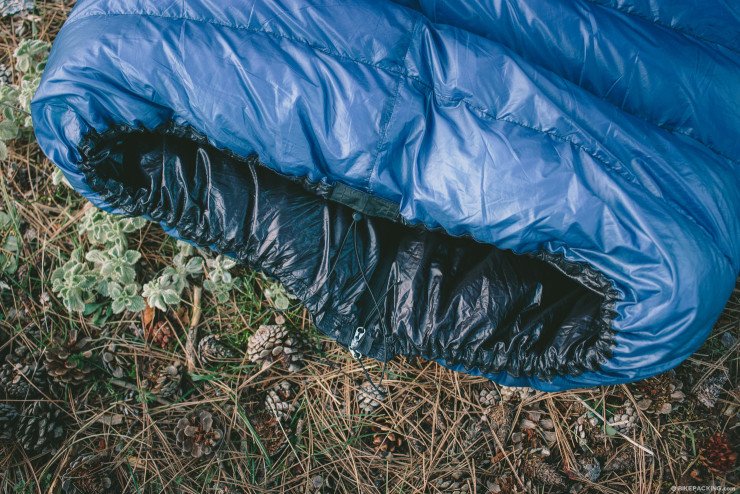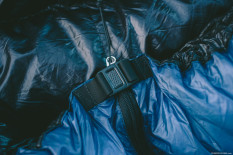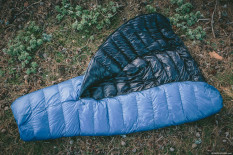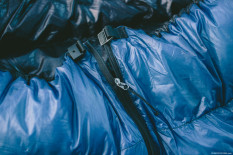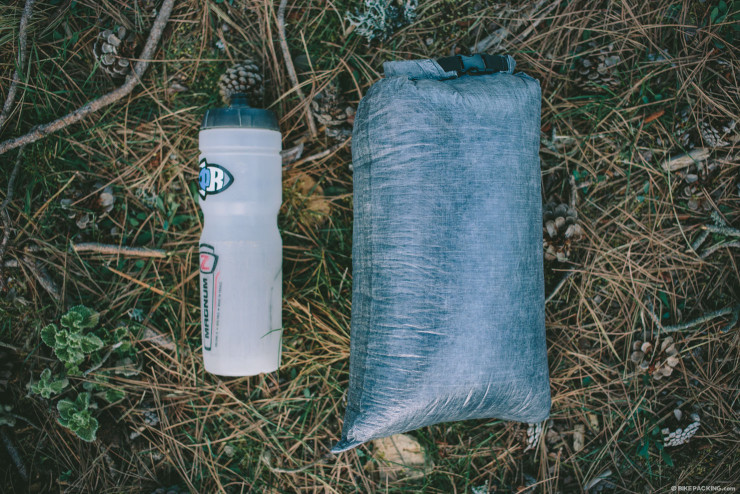Quilt vs Sleeping Bag: Katabatic Alsek 22 & ZPacks Solo Down
Bikepackers are increasingly choosing quilts over traditional mummy bags, largely because they’re lighter, simpler, and less bulky. But both have their place. Discover the pros and cons in our comparative review, featuring two of the top-rated ultralight options on the market…
When it comes to camping, choosing the right sleeping system involves a perplexing array of choices and options. Down or synthetic? Baffle direction? What temperature rating? Inflatable air mattress or closed cell pad? And lately, quilt or mummy bag? There are many good reasons to choose down, and air mattresses have come along way, but that last question opens up a few additional points of discussion.
What’s [not] in a Quilt?
In a nutshell, the concept behind idea quilt style sleeping bags is to eliminate what’s not truly necessary. In order for down insulation to work, it needs loft (air trapped in and around the down). Therefore, when your body compresses the down, it’s rendered ineffective. So why bother including insulation under the bag?
A quilt style bag does just this. And it doesn’t stop there; quilts also nix the zipper, and the mummy hood. By eliminating the zipper, retaining a wide girth at the top, and leaving the bottom of the bag open, the bag becomes highly versatile – in an extremely light and compact package. This open design is also quilt’s secret source. It can act as a simple blanket, with the simple addition of a top cinch cord that can be closed to seal out the cold around the neck and shoulders. Most quilt shave an elastic band or cord system on the bottom that allows it to be secured to an air mattress and tightened down for additional warmth. This extra room also leaves more space for layering; or it can also be left loose to remain comfortable in mild temperatures.
It’s worth noting that a quilt is intended to be used in tandem with a sleeping pad, and in turn, relies on the pad both for comfort and insulation. For example, a pad with a high R-value helps a quilt perform better in the cold.
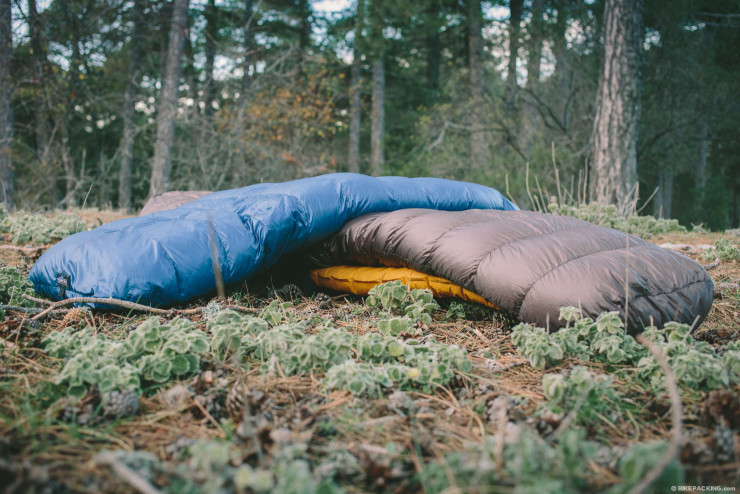
Some Cats are in The Bag
The bag versus quilt debate is as old as time. Okay, not quite as old at that, but it’s a conumdrum that’s been discussed to no end in backpacking forums around the interwebs. The most compelling case for the sleeping bag is that its basic tube design prevents air drafts. This is true, particularly if you tend to wiggle around a lot at night. Another common argument is that a traditional sleeping bag is in fact simpler, and requires zero fiddly setup. Then there is the mummy hood, which some find key to survival in colder temps; and for arctic cold, this may indeed be the case.
Speaking for the “baggers”, I’d sum it up by saying that a good old-fashioned sleeping bag utilizes a simple design that combines warmth with a dash of security. Several ultralight companies are even pushing the idea of a sleeping bag, like the Big Agnes Pitch Pine (which uses a backless design and a sheath for the sleeping pad), the minimalist ZPacks Solo Down (reviewed below), and the two-faced Enlightened Equipment Convert (which we’ll be reviewing in a second instalment on this subject).
20 is the Magic Number.
Before we go on, note that the temperature rating system used by sleeping bag manufacturers is not a perfect barometer to judge your own comfort; there are many variables that should be recognized. Consider the R-value of your sleeping pad, personal cold tolerance, typical cold areas of your body, how much you move around during the night, and whether or not you are a side sleeper. Also consider the climate in which you’ll be bikepacking.
This post is geared toward 3+ season bikepacking, and travel through areas where temperatures may fluctuate. ‘3+’ refers to the shoulder seasons that can go well into the winter depending on location and climate. For example, the testing for this post was done in southern Spain in late fall. Closer to the coast we experience nights in the upper 50s (13ºC +), and at higher altitudes, temps dropped into the lower 20s (-5ºC). For bikepacking trips where temperatures can vary from 15ºF/-9ºC to 70ºF/21ºC, we have found bags and quilts rated around 20ºF/-7ºC to be a versatile choice. A 20ºF bag is not a ‘do all’ system, but when mountain climates are calling, it’s close. With a 20 degree bag or quilt, one can use clothing layers to beef up the rating and sleep comfortably well in to the teens. Or conversely, a 20º quilt can be opened up for nights in the 70s. Tropical climes are another story; to that point, carrying a 40ºF bag may be a better option (we’ll be covering that in a not-so-distant future post).
Here are two ~20ºF/-7ºC bags that offer great features in a minimal and ultralight package.
Katabatic Gear Alsek 22º (-7ºC) Quilt Review
Reviewed by Logan Watts
Aaron Martray founded Katabatic Gear on the lightweight backpacking philosophy of doing more with less. Katabatic specializes in quilt style sleeping bags, based on Aaron’s real world experience proving their products in the Colorado wilderness and beyond. Katabatic is best known for their Palisade 30 quilt, which has won countless outdoor gear awards; the Alsek 22 offers the same design in a warmer package, which makes it a clear choice for 3+ season bikepacking. Even with a sub-freezing temperature rating, the Alsek 22 is a compact and lightweight quilt. In addition, with it’s roomy adjustable design, it can be paired with clothing layers to create a solid winter sleeping system.
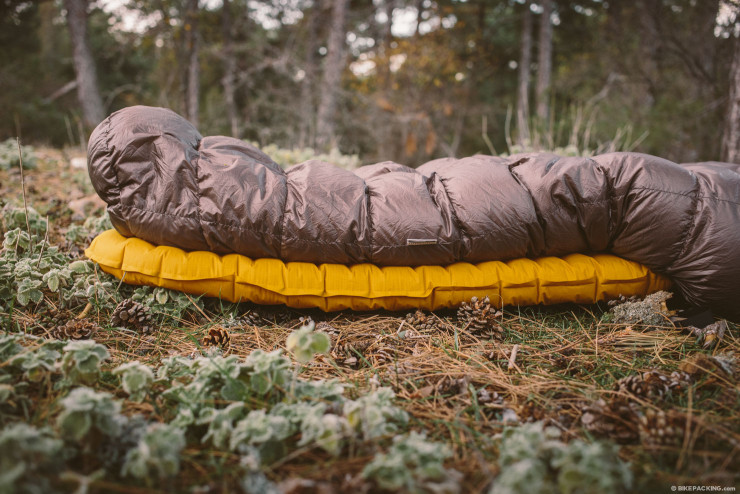
The Alsek has a unique attachment system which keeps the sides of the quilt butted just around the edges of the pad. I used the Alsek with a ThermaRest NeoAir Lite which seemed to pair perfectly. There are three horizontal attachment points that can be used in different ways. I set it up as recommended using the the Cord Clip attachment system; each of the two cords are secured by inserting the loops into simple clips on the sides of the bag. Then the cords are pulled through Katabatic’s patented Cord Clips (see photo below, right).
The first attachment position allows the clip to slide freely on the cord. For warm weather this gives you the most freedom of movement and allows you to easily maneuver in and out of the system. When the temperature drops, the cords can be moved into the second position which allow them to lock the bag’s sides in place at the bottom edge of the pad; in my experience, this almost completely eliminated drafts. The inner volume of the bag can be controlled by lifting the Cord Clip vertically to slide along the cord. Returning the clip to its horizontal position locks the Cord Clip in place. This also allows you to adjust the bags position on top of the sleeping pad, which as I might add is incredibly stable with the horizontal baffle design of the NeoAir. The third attachment, an elastic strap with two plastic straps, is near the bottom third footbox of the bag. The sealed footbox tube seems to have extra fill. My feet typically suffer the most in cold weather, but I’ve yet to have cold hooves in the Alsec.
Even the ‘long’ version of the Alsek compresses to a small size, considering it’s loft. It comes with its a small nylon stuff sack as well as a large cotton bag for long term storage. However, for bikepacking, I found it best stowed it in a weatherproof ZPacks cuben fiber Slim Dry Bag, which pairs perfectly with a UL tent in the Revelate Harness.
- Size (as tested): 6’6″ (long)
- Fill (as tested): 900
- Weight (as tested): 652g/23oz
- Country of manufacture: USA
- Price (as tested): $510.00
- Contact: Katabatic Gear
“Using the Alsek 22 was my first experience with a quilt style bag, and I have to say I am extremely impressed. I really appreciate the ability to adjust the temperature. And the quilt has much more room than I am used to in my old mummy bag. I move around a lot and it stays in place, which I really like. In cold weather just secure the neck snaps and pull the bag around you for maximum warmth. Surprisingly, the NeoAir has a really comfortable surface as well. If I had to come up with a complaint, it would be that in warmer temps, this thing is rather hot.” – Logan
ZPacks Solo Down Sleeping Bag (20ºF/-7ºC)
Reviewed by Virginia Krabill
While the necessity of some camping gear is debatable (Do I really need to pack that folding spatula this time?), a comfortable sleep system is not. I, for one, don’t want anything standing in the way of a good snooze, especially after a long day of cycling. Generally speaking, I’m a sound sleeper, but there’s one thing that can really wreak havoc on the quality of my ZZZZZs… the cold. In fact, I dread the cold, and do my best to avoid being in it at all, much less when I’m trying to get my “140 winks”. So, when Logan and I decided on a late fall bikepack in Europe (yeah…I know southern Spain isn’t exactly Nordic), I knew I needed a warm sleeping bag. And, given the bikepacking set-up and terrain we’d be tackling, it needed to pack small and be ultralight.
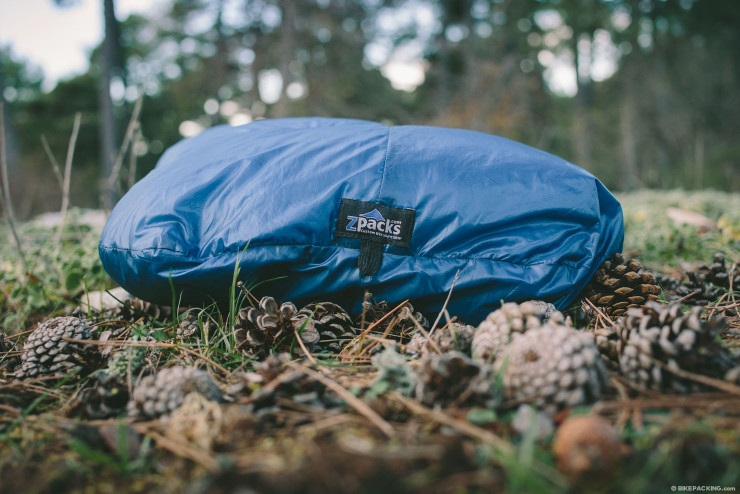
Enter ZPacks. ZPacks, a small business located in West Melbourne, Florida was established by Joe Valesko in 2005. Joe, an avid hiker, designs and tests all of the company’s gear himself. Each of the sleeping bags is made to order by skilled seamsters and seamstresses on the premises. With numerous options available, each ultraminimal ZPacks sleeping bag is customized to best meet the needs of its owner. To help customers make those design decisions, Joe or one of his very tight-knit crew members is available to personally answer questions or make suggestions.
So, after some deliberation, I went with the award winning 20 degree Solo Down in regular length, extra wide, “default” zipper, sans draft tube, all in a beautiful slate blue. At 551 grams, mine may not be the most ultralight bag out there, but it’s pretty close. And, most importantly, it’s nice and toasty! So far, we’ve slept in temps down to the mid 20s, and I’ve had no complaints.
All ZPacks sleeping bags are overfilled 30% based on the calculated amount of 900 fill power down required to fill the volume. Tightly spaced continuous baffles help keep the down evenly distributed. A thorough, post-stuff sack shake helps to quickly re-loft the down (and remove any lingering cookie crumbs), and then, what you end up with, is a wonderfully cozy cocoon. Even when the draft tubeless zipper manages to work it’s way out from under my twisting and turning body, I haven’t noticed a cold spot. Really…the warmth factor is remarkable.
With all this warmth, a minimal weight, and tidy packed size, there is one caveat…ZPacks bags are hoodless. On most nights, my head has stayed plenty warm just wearing the hood on my Patagonia Merino Air thermal. However, on a couple of occasions, I have found it necessary to pull the sleeping bag up around my noggin. That’s my bad though…as suggested by the ZPacks website, I should have come more prepared. A warm hat and scarf (if you don’t want to cinch the bag around your neck with the at times unruly cinch string) would be a perfect solution…even better than the traditional hooded mummy bag, as the head would stay nice and warm despite changes in sleeping position. I don’t recommend, however, the alternate solution of getting a longer sized bag, because I actually found it to be a little humid and stuffy in the bag when my head was covered.
- Size (as tested): Medium Length/Wide Width
- Fill (as tested): 900
- Weight (as tested): 551g/19.4oz
- Country of manufacture: USA
- Price (as tested): $410.00
- Contact: Zpacks
“I love my Solo Down. It’s lightweight, and it’s managed to keep this very cold-natured gal nice and cozy. To sweeten the deal, ZPacks is an awesome little company, making thoughtful (they buy zero product from suppliers that live-pluck birds and are Bluesign certified for environmental performance) products the USA.” – Virginia
wrap Up
So what’s our take on the quilt vs sleeping bag debate? It’s really a case by case conundrum based on personal sleeping habits, cold sensitive areas, and ultimately your own comfort. Although a quilt should certainly save several ounces over a traditional bag of the same rating – and be less bulky too – companies such as ZPacks are proving that a sleeping bag can be just as light.
That said, it’s worth noting that the Alsec quilt tested is a ‘long’ version while the Solo Down is a regular, so they shouldn’t be compared apples to apples. Both are extremely well made, boast great attention to detail, and are made in North America, justifying their price tags. Personally, I am sold on a quilt for 3+ season camping – it’s light, packs small, and is highly versatile. But Gin, being a colder sleeper than I am, prefers the sleeping bag as her warmth cocoon.
FILED IN (CATEGORIES & TAGS)
Bikepacking Gear
Camping Gear
sleeping-gear-for-bike-touring sleeping-bags sleeping-gearPlease keep the conversation civil, constructive, and inclusive, or your comment will be removed.






